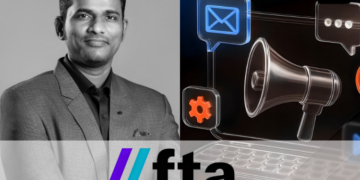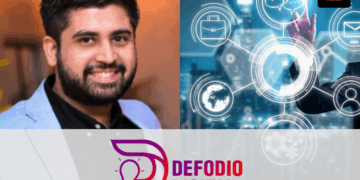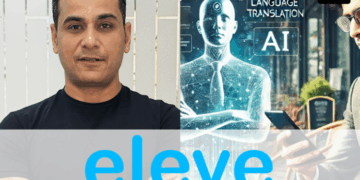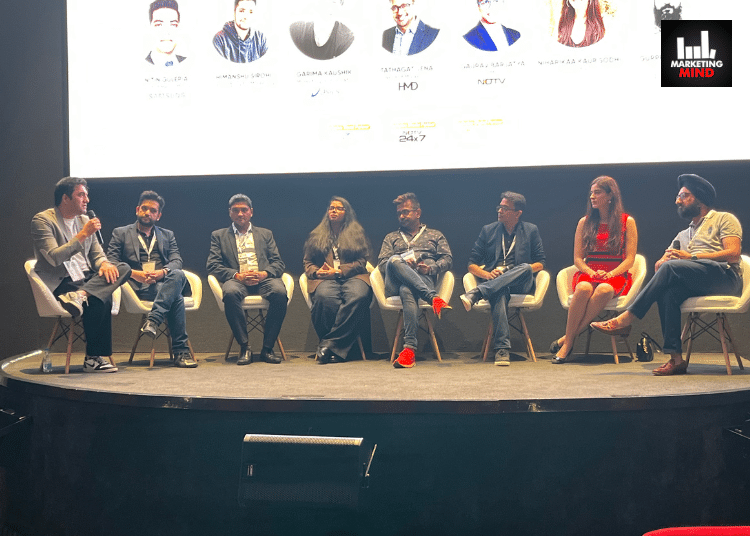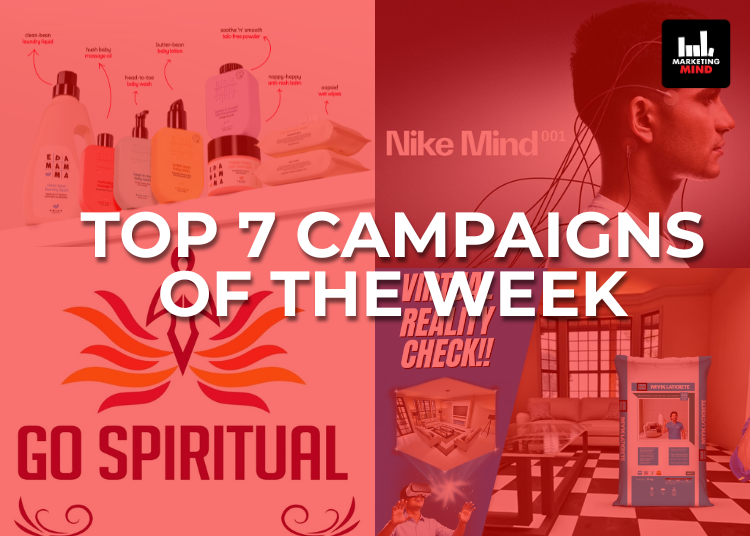Over the past few years, influencer marketing in India has undergone a significant transformation, shifting from a focus on high follower counts to an emphasis on authenticity and genuine connections. As brands increasingly seek to engage with their target audiences, they are prioritising influencers who resonate with their communities rather than merely those with impressive metrics. This evolution is particularly evident on platforms like Instagram, where nano and micro influencers are making a substantial impact.
During a recent panel discussion at the iCubesWire India Influencer Conclave, industry leaders – Gurpreet Singh, Head of Performance, GroupM; Nitin Guleria, Head of Media Mobile, Samsung; Himanshu Sirohi, Head of Digital Marketing, Apollo 24/7; Garima Kaushik, Marketing and Growth, asics; Sonal Shrivastav, Digital Marketing Head, Kenstar; Tathagat Jena, Head of Marketing, HMD; Gaurav Barjatya, Marketing Head, NDTV and Niharikaa Kaur Sodhi, Creative entrepreneur and Writer – delved into the nuances of this evolution.
A recurring theme was the importance of authenticity, with speakers highlighting that brands are moving away from collaborations solely based on numbers. Instead, they are looking for influencers who can genuinely connect with their target groups. The panelists underscored the growing trend of brands investing in nano-influencers, noting that their personal touch often yields impressive engagement rates and loyalty.
The discussion further revealed that the allocation of significant budgets for influencer marketing signifies a burgeoning commitment to this strategy. Panelists agreed that what we have witnessed so far is merely the beginning of a much larger trend, hinting at an exciting future where influencers play an even more central role in brand storytelling and consumer engagement.
Singh, the moderator, said that the digital ecosystem has always been dynamic, but the rapid growth of influencer marketing, especially in the post-COVID era, has been remarkable. The pace at which it has evolved in recent years has been immense, bringing about significant changes.
He highlighted, “The landscape of influencers has evolved significantly. During an event at Meta, it was highlighted that there are 320 million creators and influencers worldwide, with India accounting for nearly 30% of them, a remarkable figure.”
While discussing how influencer marketing has evolved in India, Guleria said that in the past few years, the rise of social media has dramatically transformed how people consume entertainment. Where television once dominated, today most people likely spend more time on social platforms than on any other medium.
“This shift has propelled influencers into the mainstream. Many influencers, who initially gained prominence online, are now making their way onto television, with traditional media becoming secondary to their growing influence. This marks a golden era for influencer marketing, where they drive much of the advertising across all platforms, starting with social media. This is the most significant change I have observed,” he added.
Similarly, Sirohi emphasised, “Over time, I have observed how influencer marketing has evolved rapidly, transforming into a dynamic creator economy. I view it as a space where an influencer’s personality drives their connection with a brand. When it comes to influencer marketing, it’s the authenticity of the influencer that creates meaningful engagement, rather than just their reach. The content economy, in turn, thrives when influencers produce visually compelling content that resonates with their audience. It’s really a balance between both elements.”
“As a brand, I would always prioritise an influencer’s authenticity over their follower count, because that genuine connection is key. This ecosystem is still in its early stages, and while it’s evolving quickly, I believe it will take about five to six more years before we see significant consolidation. Ten years ago, this space was virtually non-existent, and now I foresee it undergoing further transformation,” he added.
Furthermore, Sirohi went on to say that going ahead, he anticipates increased integration of data and AI, along with more comprehensive reporting from platforms. Likely, there will be a rise in marketplaces, much like the gig economy, but none have yet managed to fully crack the code of this ecosystem. The next five to six years will be pivotal, and by then, everyone will witness a completely different landscape.
Meanwhile, Shrivastav underscored that one of the most significant shifts in influencer marketing is the growing emphasis on authenticity and data-driven strategies. While highlighting the rise of authenticity, he said that according to a Stacklok report, customers identify authenticity as a key factor when choosing a brand. This means brands must collaborate with influencers who create relatable content.
“Next, I’d like to highlight the increase in spending. In fact, 53% of brands are raising their influencer marketing budgets. These brands are no longer simply measuring reach as a benchmark but are now focused on return on investment (ROI). They are utilising analytics tools to track metrics like cost per acquisition, traffic, visits, and engagement rates,” he said.
“Platform dominance is another important aspect of influencer marketing. Statista reports that 70% of influencer marketing activity takes place on Instagram, followed by Facebook and YouTube. Lastly, there is a notable shift toward video content consumption, with more users engaging with short videos rather than static images,” Shrivastav added.
Kaushik highlighted that before COVID, influencer marketing was seen as a separate domain, almost an additional effort brands took on just for the sake of it. Now, it’s a critical part of the strategy.
“Based on the brands I work with, influencers have become one of the most essential channels. You can’t launch a store or collaborate without involving them, it’s practically mandatory, especially for fashion brands,” she said.
As for the content itself, Kaushik mentioned, the focus has shifted towards authenticity. In the beginning, it was mostly about creating content that showcased a product. Now, even when filtering who to work with, she looks at the engagement they generate and the kind of connection they build. It needs to create an impact, not just push a product, and that brings its own set of challenges.
“With my transition from H&M to asics, which is a more niche brand, there’s been a change in approach. Now, when I consider influencers, it’s not just about the content they create but the kind of influence they wield. My current priority is to drive influence, not necessarily to push specific types of content. If an influencer holds sway within our target community, that’s what matters most, as that’s essentially what we are selling. In fact, influencers have become just as important as platforms like Google and Meta. Naturally, the budgets have followed this shift as well,” she added.
Meanwhile, Jena said that at one level, the driving force behind the content creator economy and its management must be examined from a broader social perspective. The career opportunities are immense, whether in fitness, lifestyle, or other sectors, content creation has emerged as a legitimate career path.
“Many see a golden opportunity at the end of this journey, which has fueled the rise of influence. But, are all creators true influencers? Not necessarily. Someone with 10,000 followers in a small city is a legitimate influencer, a grassroots-level creator. On the other hand, someone with half a million followers in a metro may not fit the same mould. Most importantly, the distinction between content creators and influencers has become increasingly blurred,” he stated.
Barjatya, who was the sole panellist from the media and entertainment sector, said that he sees a unique advantage in content creation.
“When you develop strong anchors, characters, and leads, they organically evolve into brand endorsers and influencers. The news category has a broader impact, shaping national narratives and influencing public perception and behaviour. However, from a branding perspective, the goal remains to position the brand within specific target audiences, be it the young, elderly, women, or children, by tailoring activities to reach those demographics,” he said.
“In terms of marketing, the landscape of influencers has evolved, and an interesting distinction emerges which is that popularity does not necessarily equate to being a content creator or an influencer. Over the past few years, content creators and influencers have become more strategic, whereas marketers, in my view, have regressed. The best digital content ideas don’t stem from simple Excel sheet formulas or predetermined combinations of numbers, this mechanical approach is precisely where the gap lies,” Barjatya added.
Furthermore, he emphasised that an influencer’s role is to genuinely influence on a specific topic, yet many marketers focus solely on metrics, adding up total reach and hoping for the best. This “spray and pray” tactic is misguided. Marketers should prioritise the core idea behind their campaigns, rather than getting overly fixated on numbers.
Sodhi mentioned that over the past three years of writing on LinkedIn, she has noticed a significant shift. Writing has always been her forte, and now, brands are increasingly supporting authentic storytellers on the platform.
She pointed out that this also applies to people with 15,000 followers who have landed impressive collaborations. Personally, as someone who regularly posts about travel and lifestyle, Sodhi had collaborations with big brands and was the first one to collaborate with Airbnb on LinkedIn, which shows how much trust these brands are placing in creators like her, the storytellers, because they have carved out a niche that engages people.
“What makes this shift stand out is that the content isn’t just short videos or quick dopamine hits. People are actually taking the time to read these long-form stories. In today’s attention economy, that’s a major achievement. It requires not only strong writing but also content that holds the reader’s interest from start to finish and people who are interested in reading the entire story. Brands recognise this and are investing in these deeper connections,” she said.
“A few years ago, even with follower counts as high as 10,000 or 50,000, I didn’t have these kinds of collaborations. But today, whether someone has 20,000 followers or I am at 2,00,000, we’re all seeing opportunities for brand partnerships. That’s a major change I’ve observed,” she added.
Moving on, Singh underscored that micro and nano influencers’ growing volume and influence make them highly significant in today’s world, especially when aiming for deeper audience connections.
Singh posed a question to the panellists, asking, “Given their importance, how do you approach selecting or avoiding these creators for collaborations?”
Guleria elaborated that fifteen years ago, organic traffic was the highest-converting form of traffic, until paid media began to dominate. As paid media grew, conversion rates started to drop. This parallels the role of nano and micro influencers today. When they are small and just starting out, they attract an authentic following and serve as true influencers. However, as they grow and social media algorithms push their content, there’s a multiplier effect that often dilutes their authenticity over time.
“While some manage to maintain control over their narrative, quality, and authenticity, both nano and micro influencers remain crucial. What we’re increasingly seeing is a stronger reliance on nano influencers, especially for brands like ours that have already saturated the major cities and are now focusing on second- and third-tier markets where future growth lies. These smaller influencers not only tell the brand story better, but their tight-knit, engaged base gives them a unique pull, offering a more authentic connection with their audience,” he added.
Coming from a brand like asics, Kaushik believes that it’s still growing in the market. When she compared asics with H&M, the scenarios were quite different. For a brand like H&M, which is already widely popular in India, extensive influencer marketing might not be necessary, except perhaps in tier 2 and tier 3 cities. However, for asics, they are already focusing on nano and micro-influencers.
“To build brand awareness in states like Uttar Pradesh, particularly in smaller areas, an influencer with a reach of 10,000-20,000 can potentially deliver higher conversion rates than a major personality like Tiger Shroff. There is significant untapped potential in tier 2 and tier 3 influencers, a segment still being explored by brands. In contrast, tier 1 is highly saturated with influencers, making it challenging to identify the right fit, especially with the blurred line between creators and influencers,” Kaushik said.
“To effectively engage small, localised audiences, it’s essential to work with influencers who have strong connections in those communities. Word-of-mouth is especially powerful in these areas, and the influence can extend both digitally and within the local community. For brands like asics, which are still building their presence in the market, these influencers play a crucial role in driving growth and impact,” she added.
Meanwhile, Sirohi highlighted that Apollo doesn’t face challenges with brand recognition or salience. With over 150 hospitals, 6,000 pharmacies, and 2,000 diagnostic labs, its presence is already well-established. Apollo 24/7, the digital arm of the group, was created to offer round-the-clock healthcare services, as its name suggests. It isn’t limited to one category but offers a seamless healthcare continuum.
“We cater to over 100 million users monthly, with each category presenting unique challenges and distinct target audiences. Each group interacts with influencers in different ways, some require trust, while others prioritise convenience, such as timely delivery of baby food. These distinct needs call for tailored influencer strategies across the business, which is one of our primary challenges. Mass media campaigns aren’t necessary since our brand is widely recognised. Instead, we focus on activating the specific promises our brand stands for through hyper-local campaigns and nano influencers, tailored to each audience segment,” he said.
Furthermore, he explained that for instance, an influencer discussing skincare would be more relevant for Apollo Pharmacy, whereas a doctor influencer is needed for consultations. Inpatient care requires an entirely different approach, grounded in trust. This variety makes it a complex issue, but they are developing a playbook to manage these different needs.
“Currently, we work with over 50 influencers across the Apollo Group each month. We collect data to understand which influencers deliver the best reach, but our metrics vary depending on the category. We don’t focus on bottom-of-the-funnel performance metrics, instead, we evaluate influencers based on top or mid-funnel metrics, depending on the campaign. This channel isn’t treated like traditional performance marketing but as a unique approach, similar to how we view branding or TV advertising. It requires its own distinct playbook and execution strategy,” Sirohi added.
Moving on, Singh asked Jena that from a marketer’s perspective, how does he determine the right selection, and do brands truly understand the difference?
Responding to his question, Jena said, “In influencer marketing, from a media perspective, it’s always about both launching and sustaining a campaign. However, I rarely hear people discuss launch and sustenance together in this context. Typically, when we talk about these aspects, it’s a challenge that remains unsolved.”
“When evaluating influencers, especially larger ones, you consider cross-collaborations, previous brand associations, and assess whether the content feels overly transactional or if there’s a genuine originality to their scripts. It’s no longer just about follower count and potential reach, there’s a balance of subjectivity involved in determining authenticity and value.” he said.
He explained that for long-term partnerships with prominent influencers, whether managed directly or through an agency, having a sustenance plan is crucial. The work done in the first month doesn’t necessarily contribute to authenticity. Authenticity can’t be manufactured or forced, it’s something that develops through sustained relationships and genuine belief in long-term collaboration.
Singh mentioned that from a mass brand perspective, it’s crucial to understand the tools available and when to use them. Equally important is differentiating between content creators and influencers, as the line between the two can often be blurred. However, recognising the difference is key.
“How and when should brands leverage content creators versus influencers in different scenarios?” he asked.
Barjatya responded saying that one needs to reassess the strategy and clearly define the objective they are aiming for. Many tend to think, “Let’s get a big influencer, spark a small conversation,” and retroactively fit this into their funnel, whether it’s top, middle, or bottom.
“However, when you’re dealing with a category like ours, particularly NDTV, it’s essential to look beyond that. NDTV has the large-scale news broadcast segment, but we also have key verticals like food, auto, and tech, which are significant for us,” he said.
“Across our entire ecosystem, we are generating over 500 million page views per month, which offers massive reach for any brand targeting a mass audience in India. Combining this reach with our niche verticals provides a unique opportunity. For some cases, we may need content creators, while for others, influencers are more suitable. But we tend to work less with content creators because, as a content-driven business, brands approach us to create content for them. We have a robust in-house content machine, and we excel in the type of content we produce,” he added.
Furthermore, Barjatya emphasised that content creation itself isn’t an issue for them. However, when it comes to influencers representing NDTV, whether it’s promoting why one should watch NDTV, highlighting the network’s journalistic values, showcasing its anchors, or emphasising the voice it brings to discussions on various issues, that’s what truly matters to them.
“We strive to find a balance between these elements,” he added.
On the other hand, Sodhi mentioned that for the past three years, she has primarily worked in the international market, with India accounting for just 20% of her projects. Brand collaborations are only a small part of her work, but the differences in business practices between markets are striking.
“In international collaborations, especially with brands from places like the Netherlands, trust is inherent, they pay upfront, give clear instructions, and the process is straightforward. In contrast, the Indian market often involves middlemen who might inflate prices, pay less, and sometimes delay or even cancel campaigns,” she said.
“I do wish conversations in the Indian market were more streamlined. Thankfully, there’s no word count restriction in the work I do. In a world where more words don’t equate to better writing, the focus is on making a powerful impact with fewer words, which I appreciate. Personal storytelling is also highly encouraged, something I value deeply because I believe my audience connects with my work through my experiences,” she added.
Sodhi highlighted that the authenticity expected in her writing is refreshing. Unlike much of what we see on social media, where it’s sometimes obvious that influencers don’t actually use the products they endorse, platforms like LinkedIn allow creators like her to integrate real stories and experiences, resulting in more genuine content.
“I enjoy this space, and while it’s still a small market, I see potential for growth,” Sodhi added.
In conclusion, Singh asked about the panellists’ wishes for influencer marketing, the trends they anticipate in the near future, and the key aspects they plan to explore.
Niharika expressed her desire for influencers to engage on LinkedIn, highlighting that high-ticket customers are present there, creating a win-win situation. Meanwhile, Barjatya emphasised the importance of focusing on ideas rather than getting bogged down by Excel sheets, while Jena reminded everyone that influencer marketing is not a sprint but a marathon.
On the other hand, Kaushik noted that authenticity and breaking through the clutter, rather than merely following trends, should be central to their efforts. Shrivastav echoed this sentiment, emphasising the significance of authenticity and data-driven strategies. Sirohi advised taking a gradual approach, crawling, walking, and then running, while cautioning against simply imitating others, as every brand is unique.
In the end, Guleria reiterated the need for creativity, acknowledging the trust issues within the industry but also stressing that influencers must evolve to understand marketing and the KPIs that marketers face. This understanding, he believed, would deepen their grasp of business nuances and ultimately benefit the influencer economy in the long run. He concluded by asserting that to truly create influence, it is vital to understand the message and community being built and to stay true to that vision.

